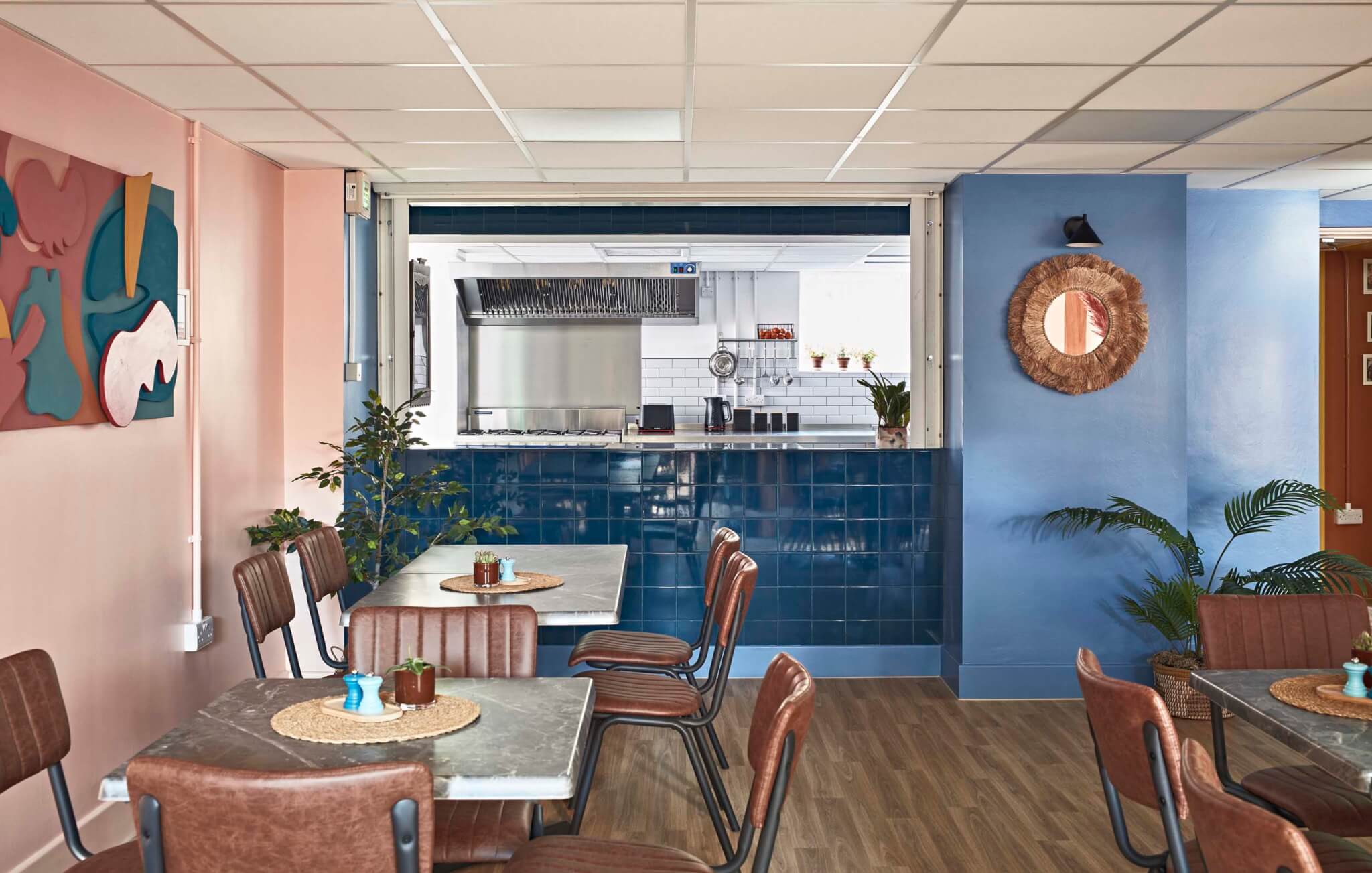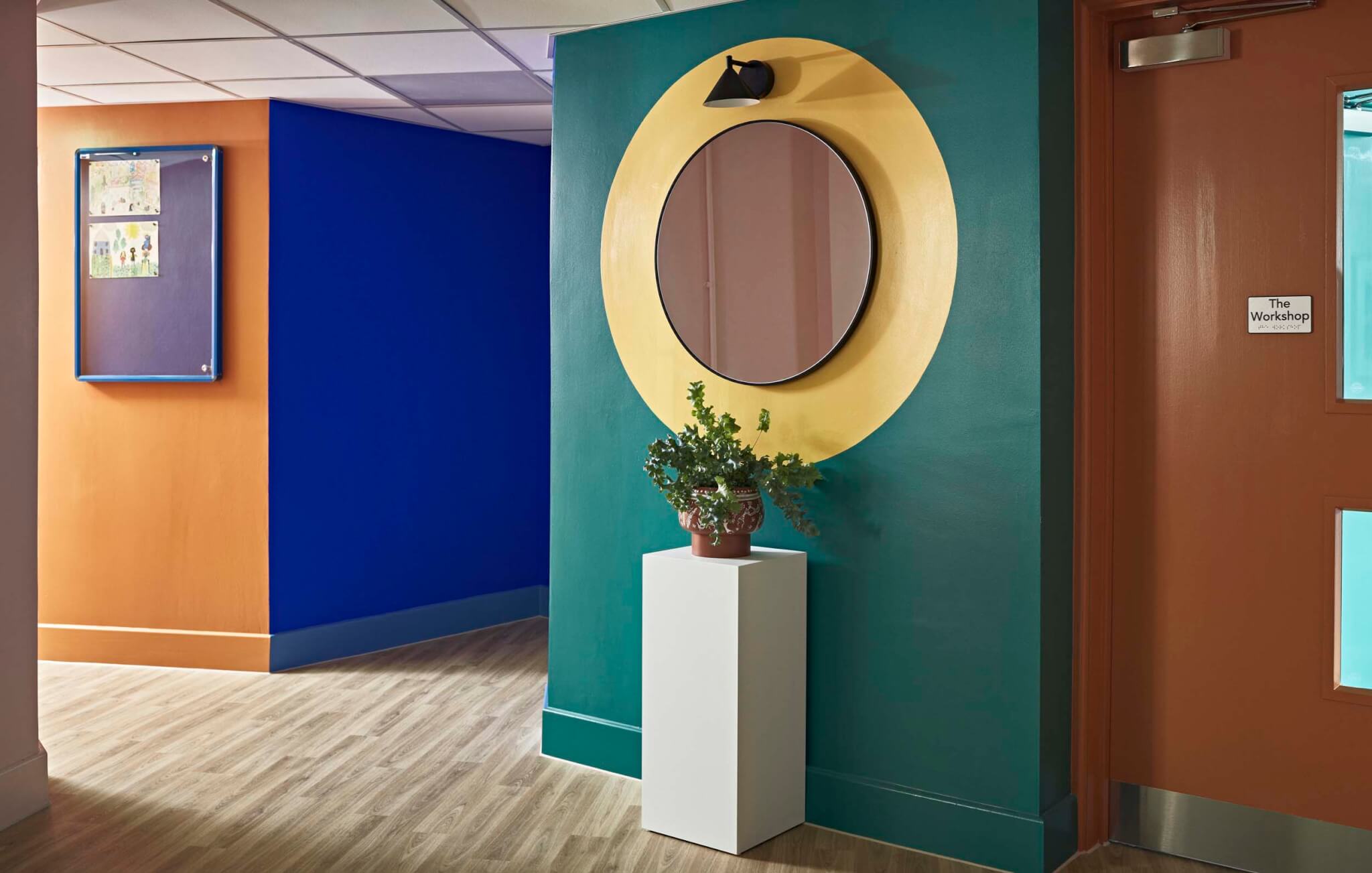“If you invest in a space, and make it beautiful and inspirational, people take ownership of it—they look after it, respect it, love it,” said Fran Lee, founder of the Flourish Group, a nonprofit studio based in London with a mission to prove design can change lives and should be available to everyone.
Since 2024, Flourish has worked on a series of community centers across the city, starting with The Exchange—an empty space in a social housing block in Maida Vale, West London, that she converted into a cozy public living room, with warm red, peaches and blues, murals on the walls, eclectic soft furnishings and personalized artworks and decor.
There is ample evidence that well-designed public spaces improve wellbeing and bring people together, with a knock-on impact on health, loneliness and community cohesion. But what’s usually missing is a focus on aesthetics and personalization—hard to measure values that are often ignored by cash-strapped local authorities and developers with an eye on the bottom line.
Intuitively, we know it matters. “In a typical community center everything is very functional: plastic chairs, wipeable surfaces, nothing you can break. God forbid you trust people with a marble coffee table or a £50 cushion, which you wouldn’t blink an eye over for a hotel lobby. When was the last time you went into a public library and thought, ‘I want to hang out here all day’?” asked Lee. Her aim is to close the gap between how we design for ordinary people and the wealthy by proving that such efforts are feasible and worthwhile.

Her own motivation is deeply personal. “My mum is a curtain-maker, and her family was in antiques, so interiors have always been part of my world,” she said. “But we didn’t have a lot of money—my siblings, parents and I lived in a one-bedroom flat until I was nine. My mum talks about making a chicken last a week.” Her creative inclinations propelled her into a career spanning fashion, events and television—including an appearance on the BBC competition Interior Design Masters in 2022. “But I knew I didn’t want to be working on Mike and Sue’s £3 million extension,” she said, reflecting on her experience of the interior design sector, “What interested me was Janet, in a one-bedroom flat with three kids.”
The chance to do things differently came in 2022, when a community group asked for volunteers to clean a space it was taking over from Westminster Council, a London local authority. With a gap in her schedule, Lee offered to design the interiors for free, and on a tight budget, “We used pre-owned items, from a Victorian washbasin stand to the 1970s mugs in the cafe.”
The result impressed the council, who asked how they could do more. Lee set up Flourish as a nonprofit to continue the work, gathering support from the likes of interior designer Matthew Williamson along the way. “We can still get paid, but the profits go back into the business,” she explained. Since then, Flourish has been involved in the council’s roll-out of its community projects, completing two “mini” hubs and with several others in the works.

Lee was frank about the wider industry, “Designers often think, ‘I know what’s best—why would I listen to the community?’ Consultation is a tick-box exercise, normally carried out by an external agency.” In Flourish’s case, it’s the designers themselves who go into the room, just as they would with a private client, “no middleman; nothing gets contorted” to suit a narrative. Her co-design workshops put residents in the driving seat, “We ran one with 90 residents, who created mood boards in groups. We then developed the design and presented it back to them, to say, ‘We’ve heard you’.”

Genuine engagement produces distinct results, she said: You end up with spaces that reflect people’s tastes rather than off-the-shelf repeats of each other. “For example, in one space they wanted to bring a sense of the outdoors in, which makes sense, as most people have little access to green space. They also echo the diversity of the communities they’re in: We’ve got hints of Moroccan design, a little Persian, a little Asian. People come in and say, ‘My mum had something like that.’ It sparks memories and conversations. We know that such recollections help with dementia and reduce isolation.”
Anecdotally, she said, the impact is clear. At The Exchange, one resident, previously isolated in the retirement home above, now comes down daily to read the paper and drink coffee. But to convince funders this isn’t enough, so Flourish is working with nonprofit research body People Street to quantify their impact. “Decision-makers don’t care unless they see facts and figures. So we’re developing ways to capture evidence that people are happier and making repeat visits, for example, through surveys filled in before and after a redesign,” Lee said. She also hopes architects will see the brand value in such collaborations, “Working with a nonprofit like ours gives kudos, and demonstrates social responsibility.”
The bottom line, however, is cultural change. “Decision-makers need to shift their mindsets, which takes a long time,” Lee said. “It’s early days, but I hope our process is solid and can change the way people approach design.”
Debika Ray is an editor and writer based in London.
→ Continue reading at The Architect's Newspaper
